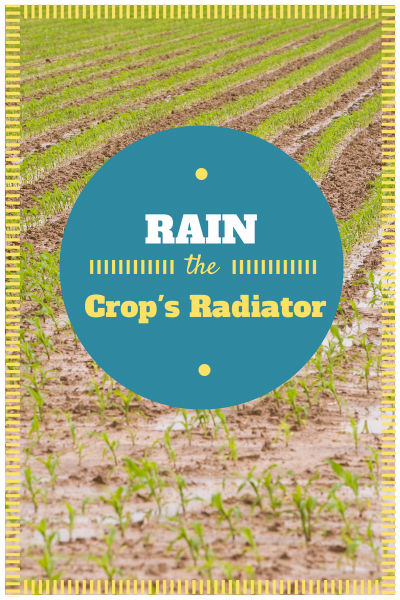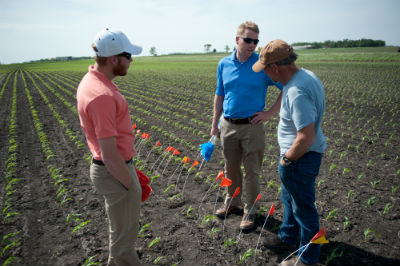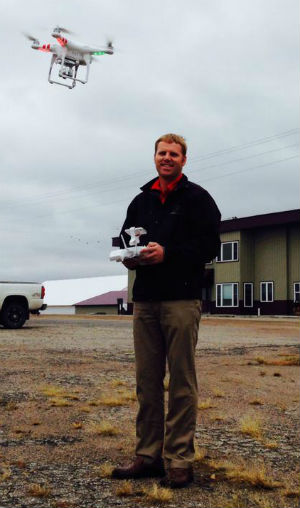 Are you getting weary of all the rain? Do you cringe every time you check the rain gauge or watch the local forecast? How is this weather impacting your crop?
Are you getting weary of all the rain? Do you cringe every time you check the rain gauge or watch the local forecast? How is this weather impacting your crop?
Rainfall is one of the most important crop inputs and is also one that most farmers have little or no control over. But many growers and crop production advisors see the role of rainfall primarily as the moisture supply that keeps plants alive. It is akin to the gasoline in a car. A plant needs water to operate the rest of the system. Unfortunately, the only parts of a corn plant that can protect themselves from the heat is the leaves. That is why corn plants take on an onion-like appearance when both temperatures and evap-transpiration rates are high and rainfall is low. When a corn plan closes the pores in the leaves and curls the leaves inward, exposed leaf surface area is greatly reduced. This conserves water and helps keep the leaves cooler.
Rainfall also serves a less known but far greater role than just supplying water to plants. Water is the radiator that cools the engine of the plant, the root system. The plant’s root system is the engine that runs the entire plant factory; unfortunately the roots have no way of protecting themselves when soil temperatures heat up. And as long as the root system is overheating, they no longer have the ability to utilize nutrients efficiently. It’s like the engine of your car overheating… the car eventually stops moving. Rainfall cools the root system so it can once again properly conduct plan functions.
In 2010, as well as our current situation in 2014, many farmers across the country had more rainfall than they wanted or needed. But most of those growers don’t realize how important that water is, even in excessive amounts. It cooled root systems and allowed them to regain their ability to perform their proper functions. And growers who knew the effects of cooling root systems, took advantage of getting them back to their normal function by immediately applying nitrogen. Nitrogen is the antibiotic for both stalk rot and drought. That means it is the main ingredient for overall plant health in a grass species like corn.
Read this article that discusses agronomic and disease issues for corn and soybean exposed to prolonged periods of high soil moisture. By Jeff Coulter, Extension Corn Agronomist with the U of M.
The number one reason why so much of the crop across the country was negatively affected by either drought or excessive water (more than it should have been) was because there were just too few applications of nitrogen to keep the plant factory running once the motor (the root system) was cooled down. In so many cases the impact of excessive water would have been lessened greatly if that key additional coolant for that radiator would have been added repeatedly.
Fields where nitrogen was applied 4-5 time throughout the season yielded up to 80 bushels more per acre vs. those that went untreated. Nitrogen not only allow the plant to stay healthy, it also helps the plant better utilize water for the development of grain. Rainfall keeps plant root systems operative at critical temperature (65-86 degrees); the key to proper function. Until a plant’s root system is operating normally, nothing you or the environment does really matters.
Do you feel differently about the rain now…maybe just a little bit?




 If you’re considering purchasing a drone for your farming operation, please be aware that it needs to be registered. The
If you’re considering purchasing a drone for your farming operation, please be aware that it needs to be registered. The  Rounding third and heading for home is
Rounding third and heading for home is  quickest way to see and interpret if you need to
quickest way to see and interpret if you need to  Are you getting weary of all the rain? Do you cringe every time you check the rain gauge or watch the local forecast? How is this weather impacting your crop?
Are you getting weary of all the rain? Do you cringe every time you check the rain gauge or watch the local forecast? How is this weather impacting your crop?
